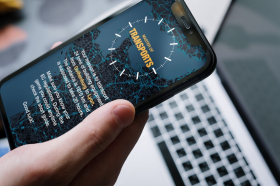During the corona pandemic, educational institutions have been forced to intensify online teaching. This situation represents a challenge but also an unintended opportunity, as educators must take the step into the digital transformation and gain extensive experiences in digitizing their teaching. This requires reflection on teaching methods and collaborative capabilities offered by learning tools.
One of the purposes of the e-ManTRA project is to prevent dropout from a course or programme by combining online collaborative learning with gamification in an application.
In this project, we will let several students work in teams, trying to solve a complicated challenge, like in an escape room.
With an online collaborative learning set-up, the advantages from traditional offline classroom settings can be transferred and self-motivation increases - if used in the right way. The conclusions from the research state are that you need to have a good understanding of where to use collaborative instead of individual learning in order to use the collaborative learning in an efficient way. Because there are several things to be aware of. Among other things, here are some interesting facts that we take into consideration when we develop our collaborative escape room challenge:
- Studies demonstrate that online collaborative learning in groups can lead to improved individual learning experience and learning results - but it can also require more work than with traditional online learning methods.
- Students using tools with high levels of collaborative learning tend to be more satisfied with their distance course and experience a feeling of a better connection with the team members. While there is no obvious difference in the learning achievement, the method actually increased participants' motivation to attend the training.
There are of course more things to care for when designing collaborative training tools. In short, the studies show that course structure, emotional support, and type of communication used are critical factors associated with student perceptions of collaborative learning and satisfaction.
Another interesting fact: Time seems to have an effect, too!
In the beginning of a course or learning programme, performance was significantly higher in tools with collaborative learning, while performance in a later phase seems higher for tasks done on your own.
By taking all this into consideration and trying to create a tool with an appropriate level of mutual closeness, trust, and interdependence, we hope that students will get valuable exchange from each other and be eager to learn more.
Easier said than done! We’re looking forward to the continuous work and the feedback from testing!

